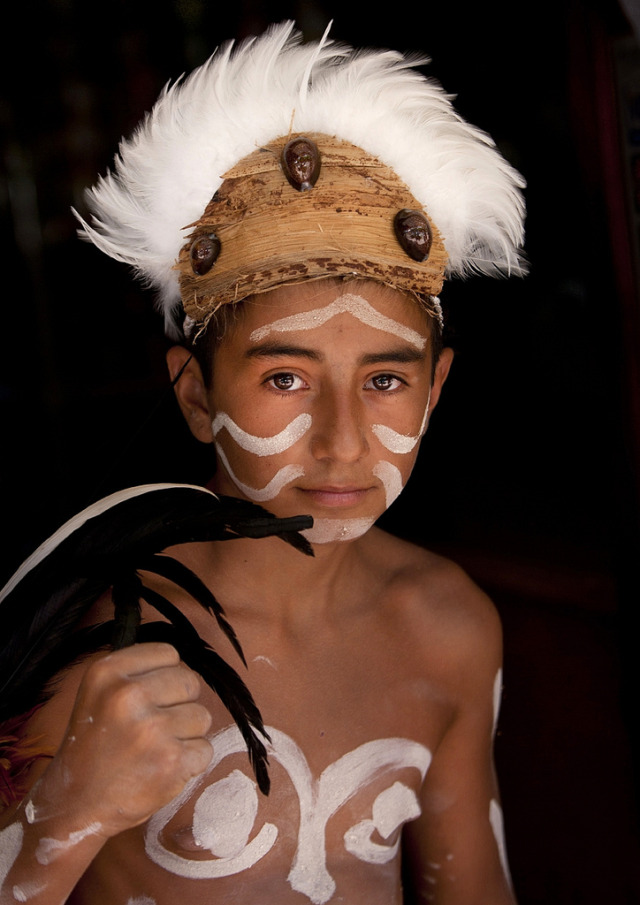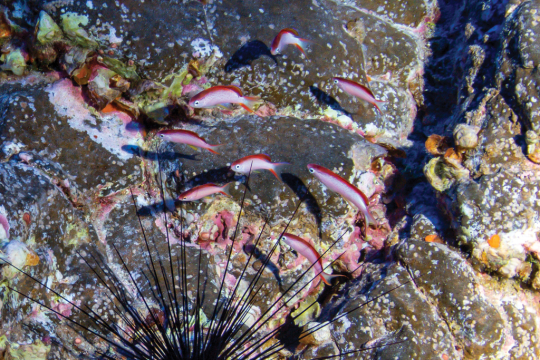#rapa nui

Rapa Nui child, Rapa Nui, by Eric Lafforgue
TheRapa Nui Fairy Basslet(Pseudanthias hangapiko)is the latest new species forRapa Nui, commonly know as Easter Island, one of the world’s most isolated inhabited islands.
Showing a clearly dimorphism, with males being slightly bigger and redish than females, these fishes are tiny, with around 3 to 4.5 cm in length. These fishes were collected at 80 m depth on Hanga Piko, a mesophotic coral ecosystem near the coast of Rapa Nui, hence its name, for the location where it were collected.

- A Rapa Nui Fairy Basslet aggregation on a rocky mesophotic coral ecosystem at Rapa Nui (Easter Island) at 80 m depth.
This fish is one of four new species that were documented from a pair of technical dives at a single location in Rapa Nui, as result of a international research collaboration, emphasizing the high number of undescribed species likely still unknown in these deep ecosystems. It is also, the first record of the genus in Rapa Nui, which hosts the second-highest level of endemism in both shallow and deep-water fishes.
- Foto: Male (upper) and female (lower) Photos by LA Rocha.
- Reference (Open Access): Shepherd et al., 2021 Pseudanthias hangapiko, a new anthiadine serranid (Teleostei, Serranidae, Anthiadinae) from Rapa Nui (Easter Island). ZooKeys.
Post link
Recent expeditions to Rapa Nui (also known as Easter Island) have revealed amazing undescribed sea star species from unexplored mesophotic coral reefs and also, from deeper depths never reached before.
In a recent work published in Zootaxa, Dr Christopher Mah, a eminence in echinoderms, describe three new species for Rapa Nui, but also other news species from adjacent region in the South Pacific.

- Uokeaster ahi, named for the Rapa Nui marine deity Uoke, who submerged Rapa Nui into the ocean using a large lever, and ahifor the local word for fire. Is endemic from the waters around Rapa Nui. Photo by Terry Gosliner.

- Hacelia raaraa inhabit at depth of 80 m below surface sea, where light still pass. It is found in rocky bottoms, among hydroids and algae.
This new species is named by the rapanui word ra’ara’a for “rough and rugged” alluding to the very bumpy surface texture seen in this species. Photo by Dr. Luiz Rocha.

- Linckia profunda is one of the deepest known species in the area, and its name profunda alludes to the deep bathymetric range of this species. Arms in this species are unequal in length, round in cross-section, with an irregular surface. It is found in Rapa Nui, but also in other areas in the South Pacific. Photo by Dr. Luiz Rocha.
These findings highlight the uniqueness of these marine ecosystems and how much we still do not know about the sea. Therefore, the importance of considering them in the establishment of efective management strategies for these communities, which are within the Rapa Nui marine-protected area created in 2017.
[Photo description: Uokeaster ahi have short arms with robust and rounded spikes, similar to spheres. Hacelia raaraa have long arms, with numerous dome-like tubercles forming lines along the surface of body and arms, giving it a rough appearance. Linckia profunda have long and slim arms, with plane ]



